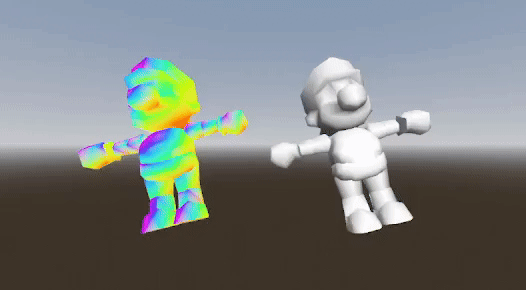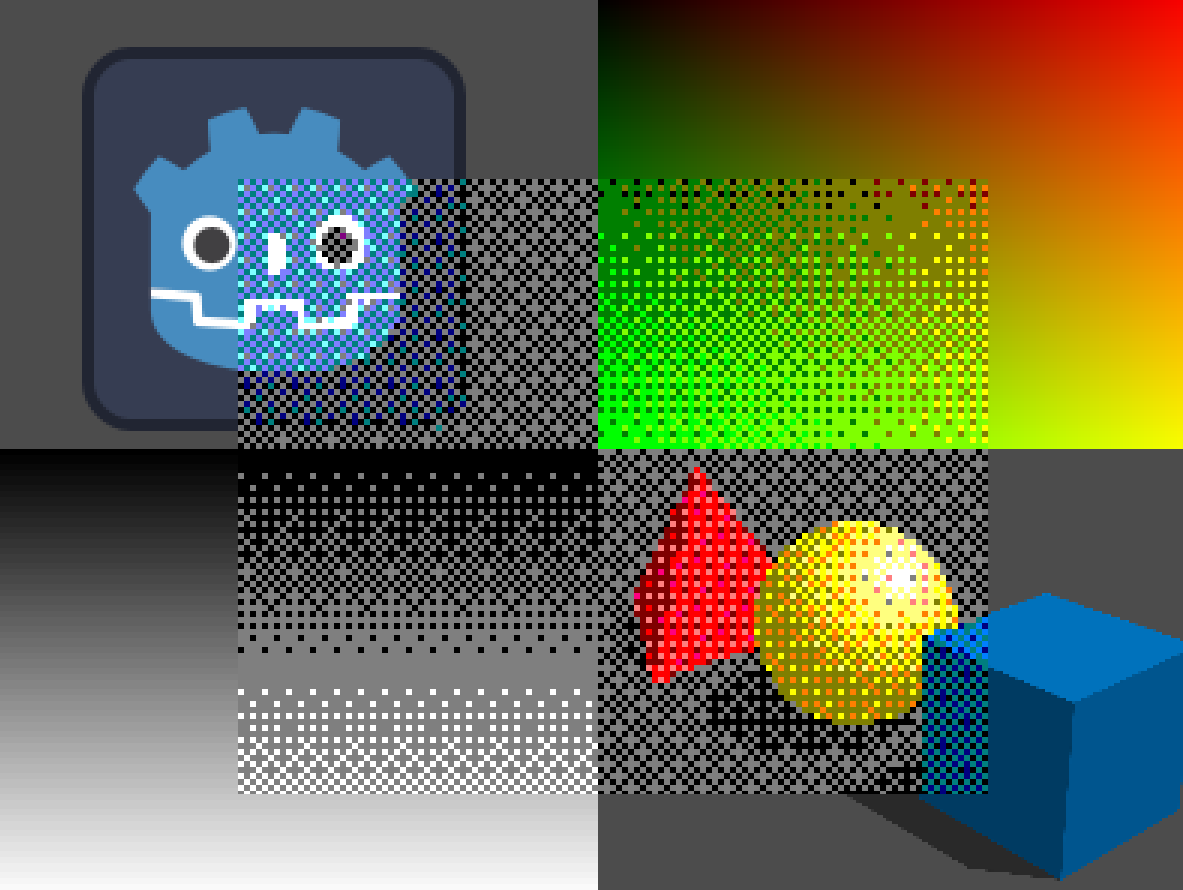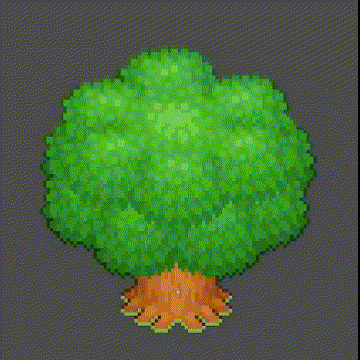Simple Ordered Dithering and Screen Pixelation
A super simple Canvas Item shader that downsamples the screen texture by a given integer, then quantises and dithers the texture using a 4×4 bayer matrix and a given bit depth. Not super advanced, but easy enough to use. This shader uses the size of the viewport when calculating downsampling, so take this into account when developing for variable resolutions.
Shader code
shader_type canvas_item;
uniform vec4 fog_color: source_color;
uniform sampler2D view: hint_screen_texture, filter_nearest, repeat_disable;
uniform float resolution_downsampling: hint_range(1.0, 8.0, 1.0);
uniform float bit_depth: hint_range(0.0, 64.0, 2.0);
const mat4 bayer_matrix_4x4 = mat4(
vec4( -0.5, 0.0, -0.375, 0.125 ),
vec4( 0.25, -0.25, 0.375, - 0.125 ),
vec4( -0.3125, 0.1875, -0.4375, 0.0625 ),
vec4( 0.4375, -0.0625, 0.3125, -0.1875 )
);
const int bayer_n = 4;
void vertex() {
// Called for every vertex the material is visible on.
}
void fragment() {
vec2 UV_new = SCREEN_UV - mod(SCREEN_UV, SCREEN_PIXEL_SIZE * resolution_downsampling);
vec3 tex = texture(view, UV_new).rgb;
//float screen_resize = SCREEN_PIXEL_SIZE.x
vec2 pix_id = vec2(SCREEN_UV.x / (SCREEN_PIXEL_SIZE.x * resolution_downsampling), SCREEN_UV.y / (SCREEN_PIXEL_SIZE.y * resolution_downsampling));
float bayer_shift = bayer_matrix_4x4[int(mod(pix_id.x, 4.0))][int(mod(pix_id.y, 4.0))];
tex += vec3(bayer_shift / bit_depth);
tex.r = round(tex.r * bit_depth-1.0) / (bit_depth-1.0);
tex.g = round(tex.g * bit_depth-1.0) / (bit_depth-1.0);
tex.b = round(tex.b * bit_depth-1.0) / (bit_depth-1.0);
COLOR.rgb = tex.rgb;
COLOR.a = 1.0;
}
//void light() {
// Called for every pixel for every light affecting the CanvasItem.
// Uncomment to replace the default light processing function with this one.
//}








this is nice. I converted it into a spatial because my setup is for the quad in front of the camera thing. Here it is if anyone wants it.
shader_type spatial; render_mode blend_add; uniform vec4 fog_color: source_color; uniform sampler2D view: hint_screen_texture, filter_nearest, repeat_disable; uniform float resolution_downsampling: hint_range(1.0, 8.0, 1.0); uniform float bit_depth: hint_range(0.0, 64.0, 2.0); const mat4 bayer_matrix_4x4 = mat4( vec4( -0.5, 0.0, -0.375, 0.125 ), vec4( 0.25, -0.25, 0.375, - 0.125 ), vec4( -0.3125, 0.1875, -0.4375, 0.0625 ), vec4( 0.4375, -0.0625, 0.3125, -0.1875 ) ); const int bayer_n = 4; void vertex() { POSITION = vec4(VERTEX.xy, 1.0, 1.0); } void fragment() { vec2 UV_new = SCREEN_UV - mod(SCREEN_UV, 1.0/VIEWPORT_SIZE * resolution_downsampling); vec3 tex = texture(view, UV_new).rgb; //float screen_resize = 1.0/VIEWPORT_SIZE.x vec2 pix_id = vec2(SCREEN_UV.x / (1.0/VIEWPORT_SIZE.x * resolution_downsampling), SCREEN_UV.y / (1.0/VIEWPORT_SIZE.y * resolution_downsampling)); float bayer_shift = bayer_matrix_4x4[int(mod(pix_id.x, 4.0))][int(mod(pix_id.y, 4.0))]; tex += vec3(bayer_shift / bit_depth); tex.r = round(tex.r * bit_depth-1.0) / (bit_depth-1.0); tex.g = round(tex.g * bit_depth-1.0) / (bit_depth-1.0); tex.b = round(tex.b * bit_depth-1.0) / (bit_depth-1.0); ALBEDO = vec3(tex.rgb); }Godot 3.6?